There’s more to the Mahangub Highlands Integrated Farm than meets the eye, far more than your usual tourist destination.
Owned by Elmer Velasco Sayre and his family, and now styled as the Sayre Highlands Resort, you can find it in Sitio Mahayag, Barangay Digkilaan in Manticao, Misamis Oriental.
As a B.S. Agriculture graduate of the Xavier University-Ateneo de Cagayan College of Agriculture who walks the talk, Sayre envisions the Sayre Highlands Resort as no mere farm-tour destination, but rather a training and outreach facility for his various advocacies.
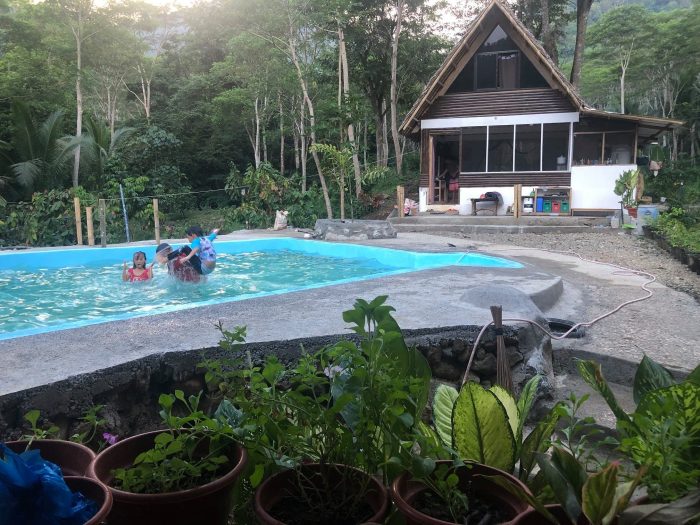
“With the restrictions caused by the coronavirus pandemic, the mountains offers a respite, a means to re-charge ones soul and spirit, and learn something new,” Sayre said. “I am just starting to build a few huts with basic necessities where visitors can relax and enjoy, developing a modest children’s playground and a place where campers and adventurers can stay for the night, and establish a modest karaoke and library hub.”
“A farm during this time is ideal because the wide spaces and distance from each other can easily be maintained in order to avoid close contact without fear of the virus.”
Fruit of the Dragon
Although it is becoming increasingly common in the Philippines, not many people know that dragon fruit (also known as pitahaya and strawberry pear) is the fruit of various varieties of cacti belonging to the genus Selenicereus (formerly Hylocereus), both in the family Cactaceae.
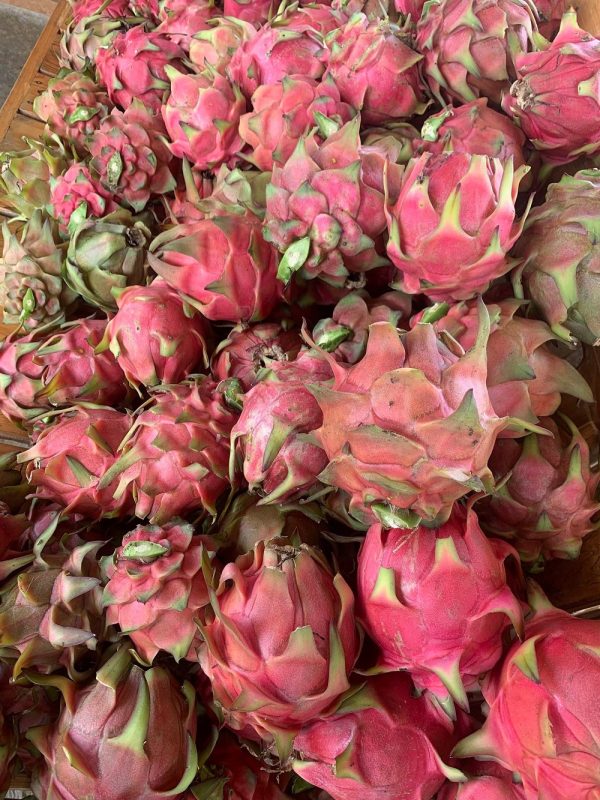
Sweet pitahayas come in three types, all with leathery, slightly leafy skin with prominent scaly spikes on the fruit exterior which most probably gave rise to the “dragon fruit” moniker.
The most common dragon fruit is Selenicereus undatus (Pitaya blanca or white-fleshed pitaya, also known as Hylocereus undatus) a pink-skinned fruit with white flesh. The red-skinned fruit with red flesh is Selenicereus costaricensis (Pitaya roja or red-fleshed pitaya, also known as Hylocereus costaricensis), while Selenicereus megalanthus (Pitaya amarilla or yellow pitaya, also known as Hylocereus megalanthus) is the yellow-skinned fruit with white flesh.
The fruit normally weighs from 150 to 600 grams although some may weigh as much as a kilo.
Dragon fruit is cultivated in Mexico, Southeast Asia, India, the United States, the Caribbean, Australia, Mesoamerica and throughout tropical and subtropical world regions.
Sayre started growing dragon fruit in early 2019 after he dropped by a dragon fruit plantation in Zamboanga del Sur.
“I interviewed the dragon fruit farmer and she said that dragon fruit is a very lucrative and high-valued crop because of its many health benefits, and demand and prices for it is always high,” he recalls.
Prior to this, Sayre was growing vegetables in his 8-hectare farm, but had issues with the highly fluctuating market, high usage of pesticides, low shelf-life of some vegetables, and savvy traders reaping profits at the farmers’ expense by dictating low prices.
“At that time I did not know of any farmer raising dragon fruit in commercial scale in Misamis Oriental, so I decided to do a trial crop with about 200 posts. Dragon fruits are grown in concrete posts supported by a used tire on top,” he explained.
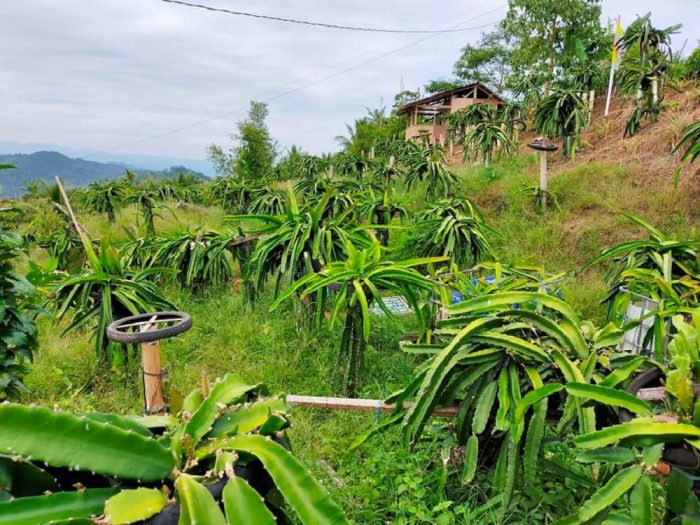
Sayre figured that with 200 posts, he would be ensured of a sufficient supply of cuttings for expansion if the venture proved successful. Although they can also be grown from seeds, dragon fruit is best grown from cuttings of a mature plant.
“In 2020, I harvested my first crop and true enough, demand was indeed very high, with my harvest practically sold out at the farm, and only a few fruits sold to neighbors in our place in Initao town,” he recalls with a smile.
Even though he sold his dragon fruit at only P100 per kilo (vs. the market price of P150 at the time), Sayre still turned a handsome return from his first harvest of 600 kilos.
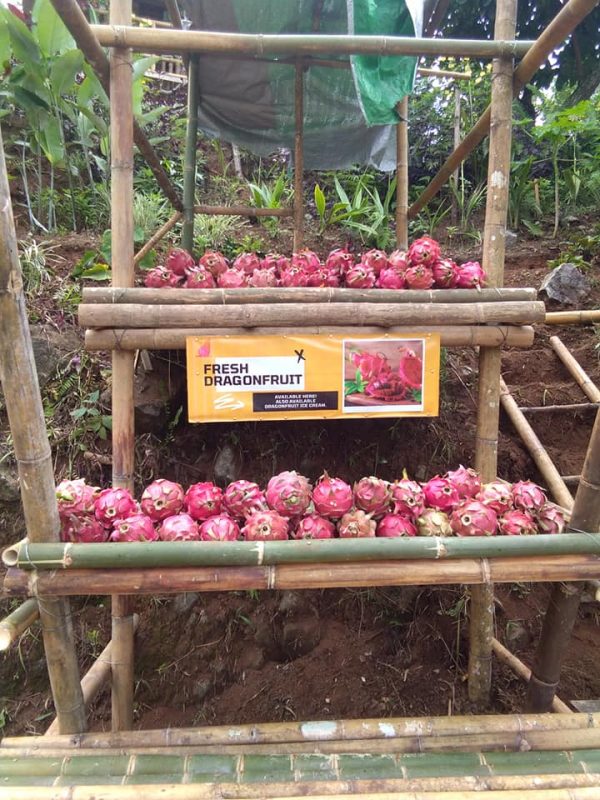
He immediately stopped growing vegetables and focused on expanding his dragon fruit plantation with the mature cuttings from his first plants, side stepping the problem most often encountered by novice dragon fruit farmers.
The Sayre Highlands
Encouraged by the fruits of his first harvest, Sayre decided to develop his farm into a resort with a twist, where visitors can enjoy the ambience of the mountains, see the plants growing, learn dragon fruit farming techniques, and come harvest time, taste the sweet, delectable fruits straight from the plants.
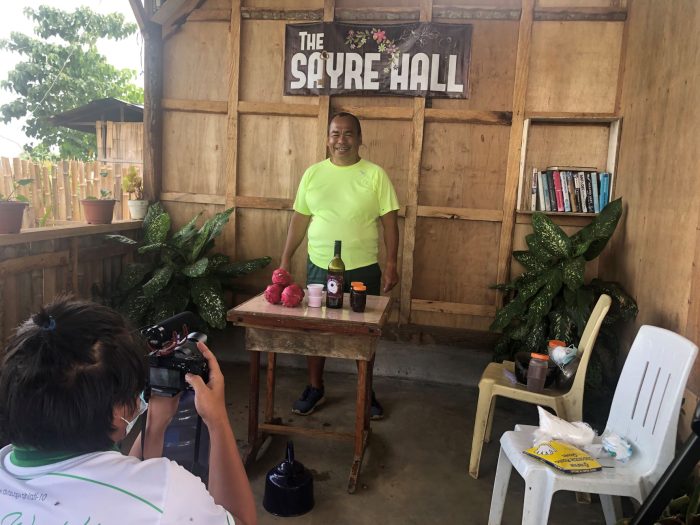
To further strengthen his various advocacies, the Sayre Highlands Resort is now an accredited Learning Site for Agriculture (LSA) by the Agricultural Training Institute-Regional Training Center 10 (ATI-RTC 10) based in El Salvador City, as well as an accredited Learning Site of the Technical Education and Skills Development Authority (TESDA) for 3 TEC-VOC Courses (Produce Organic Concoctions and Extracts, Produce Organic Fertilizer, and Produce Organic Vegetables).
In addition, Sayre researched downstream products to further encourage the long term demand for his harvest with dragon fruit wine, ice cream, salad, pastries, and vinegar.
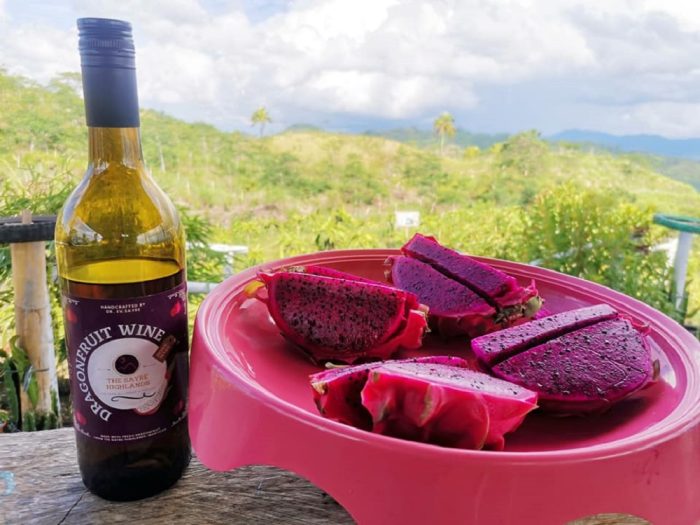

Although he has successfully grown some varieties of dragon fruit, his best-selling varieties are the Moroccan Red and Vietnamese White.
He is now also experimenting with LED lights to induce the growth of flowers during off-season to be able to supply dragon fruit to the market all year round.
“Starting October the dragon fruit seldom produces flowers due to the shorter availability of daylight. With the LED lights, hopefully we can induce the plants to continue producing flowers and fruits. However, we need to maintain plant health and vigor in order for them to continue producing large fruits.”
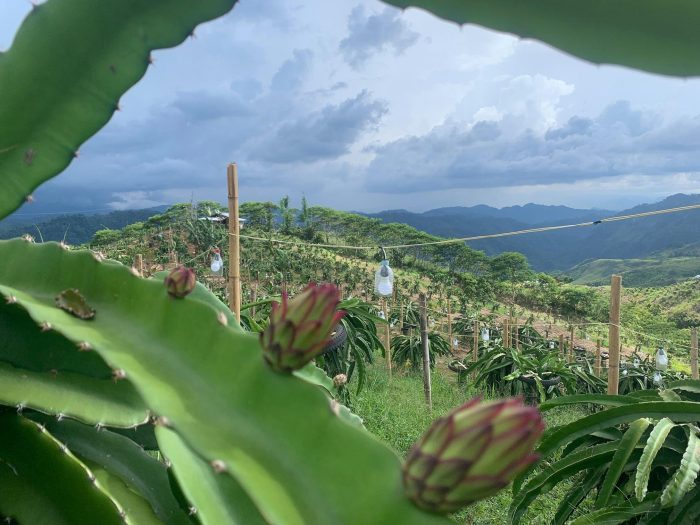
Winter may be coming, but we have learned never to underestimate the Dragon Lord of the Mahangub
Highlands, and he could just surprise us with the luscious fruit throughout the different seasons.
-30-
